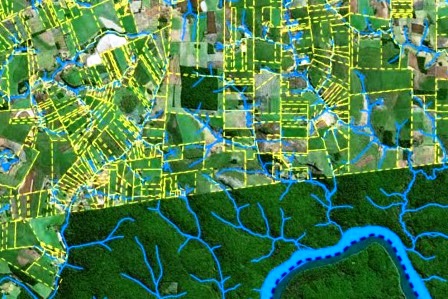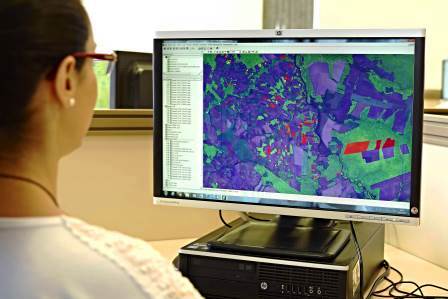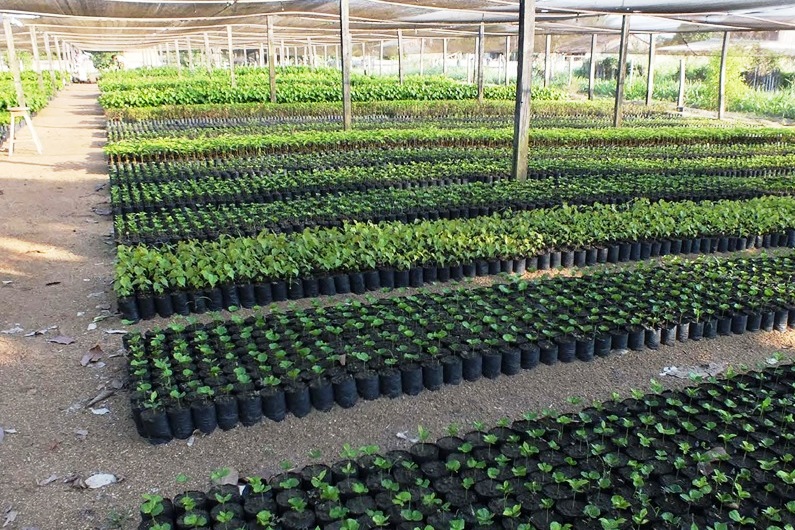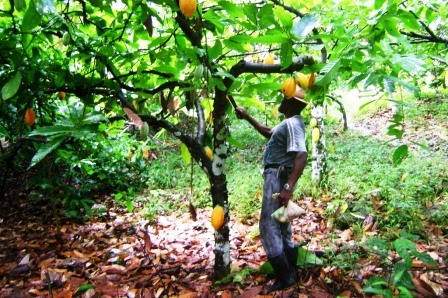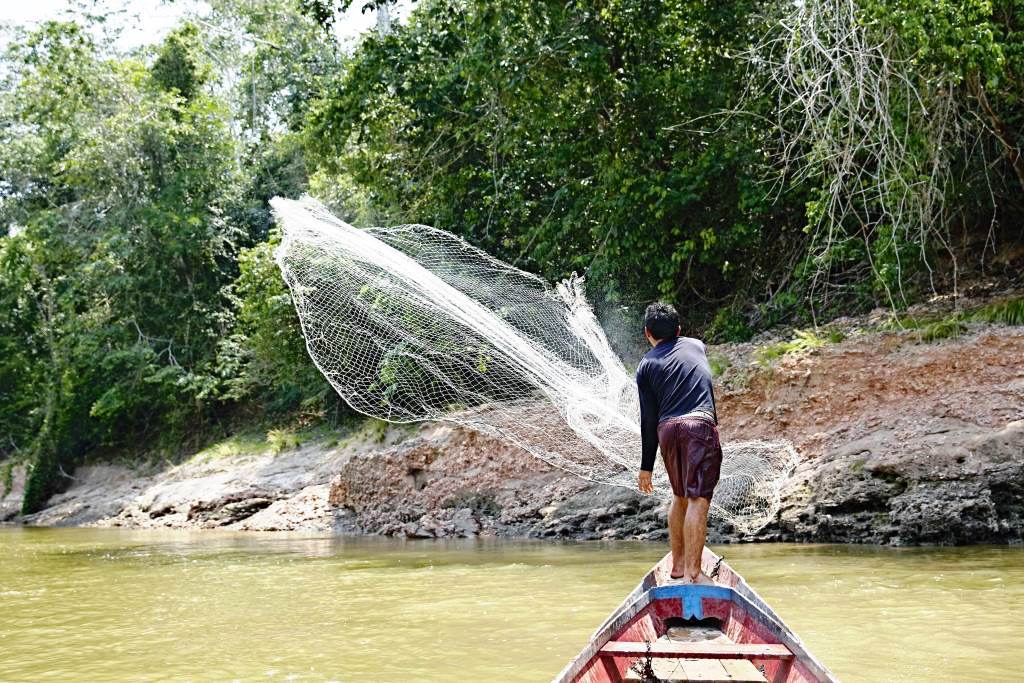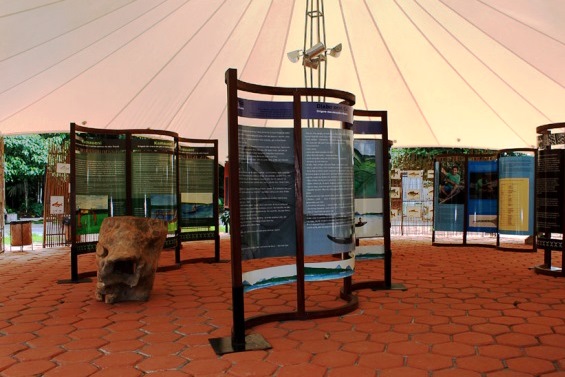INSTITUTIONAL AND ADMINISTRATIVE ASPECTS
Fadesp was the beneficiary of the project, and UFPA was its technical intervener. Fadesp, created in 1976 to support UFPA’s activities, operates in research, teaching, extension, institutional development and specialized technical services projects not only within UFPA’s scope, but also in several public institutions.
Created in 1957, UFPA is a research and teaching institution in the North region. With 14 institutes, seven nuclei, 36 university libraries, two university hospitals and one application school, the university houses a community of more than 50,000 people. This project was coordinated by the Lama, of the Institute for Coastal Studies, at the Bragança campus, located at 200 km from Belém. The project gathered 22 researchers from the institution, including undergraduate, master’s degree and doctoral students, and teachers.
RESULT AND IMPACT INDICATORS
The project activities contributed to the results related to the "science, innovation and economic instruments" (4) component of the Amazon Fund’s Logical Framework.
Outcome 4.1: Generation of knowledge and development of technologies to recover deforested mangrove areas in the Amazon biome, and capture and storage of carbon in this ecosystem.
The main indicators agreed to monitor these objectives were:
- Number of theses and scientific articles published (effectiveness indicator)
Result achieved: four doctoral theses, seven master’s dissertations and nine term papers defended
- Number of pedagogical or informational publications (effectiveness indicator)
Result achieved: a book
- Measurement of number of researchers and technicians involved in RD&I activities settled in the region (effectiveness indicator)
Target: 15 researchers. Result achieved: 21 researchers and one technician settled in the region throughout project implementation
- Measurement of the amount of carbon captured and stored in the mangrove areas effectively reforested by the technologies developed in the project (effectiveness indicator)
Target: not defined. Result achieved: advances have been made in relation to the estimates of the amount of biomass that the mangrove contains and the carbon sequestered and stored in the Amazonian mangroves
- Area replanted (efficacy indicator)
Target: 5.7 hectares. Result achieved: 9 hectares
- Measurement of seedlings produced (efficacy indicator)
Target: 40,000. Result achieved: 55,400 seedlings and 5,000 propagules planted
- Laboratory area constructed (efficacy indicator)
Target: 325 m2. Result achieved: 325 m2, including the equipment necessary to research performance
The expansion of the laboratory infrastructure and the acquisition of equipment have been shown to be relevant for generating knowledge and developing technologies, with the publication of theses, scientific articles, pedagogical documents, and the creation of new products or technological processes. The vehicle purchased with project resources enabled field surveys that were not possible previously. The auditorium built offers a more adequate space for the defense of term papers, dissertations and theses, and the performance of lectures and courses. The physical structure of the laboratory enabled researchers to be received and the development of the studies, promoting an increase in the potential of human resources training as well as broadening the horizon of research and extension.
In addition to constructing the laboratory, which is fundamental for developing lines of research in the areas of mangrove forest ecology and socioenvironmental studies on the populations that inhabit them, it is worth mentioning the planting of 60,400 seedlings and propagules in nine hectares in the Bragança region, the most degraded mangrove area of the Amazonian Brazilian coast. This replanting is an advance not only for developing technologies to recover degraded mangrove areas, but also for recovering the ecological functions and services that this ecosystem provides for the community.
The information generated by the project had an impact both in improving the knowledge about the mangrove system and in the actions carried out with the community through practices and courses. Similarly, the results obtained are subsidy for the management plan of the Caeté-Taperaçu Marine Extractive Reserve, promoting the sustainable use of the resources and services available in the mangrove area of this region.
RISKS AND LESSONS LEARNED
The extraction workers who live in the region are social actors of great importance to the mangrove ecosystem and have engaged in the socio-environmental activities proposed in the scope of the project. In this sense, sensitization activities allowed researchers’ support to be well received, and their importance in recovering degraded areas of mangrove within the extractive reserve and its surroundings was recognized.
This experience has shown that community involvement is critical to project execution and success. Throughout the project, it was also evident that the articulation between community and academia strengthens both parties in face of the daily challenges faced. The generated inputs – such as maps of distribution of mangrove trees, distribution of the Mangrove Crab, areas of wood cutting, areas of potential crab extraction and carbon storage – also result from this dialogue, forming the database for implanting the already existing management plan.
On the other hand, the articulation with the public authority (especially the Municipal Secretariat of the Environment and the Chico Mendes Institute for Biodiversity Conservation – ICMBio) could have been more active. That would enable the expansion of replanting activities and the improvement of the population’s awareness of the need to change activities in favor of mangrove management and conservation within Resex.
SUSTAINABILITY OF RESULTS
In order to maintain the activities initiated by the project, the supported researchers entered into the following partnerships:
- Carbon Sequestration Project and Recovery of Deforested Mangrove Forests in the Ajuruteua Peninsula – Bragança, Pará. Notice 001/2010. Fundação Amazônia Paraense (Fapespa/Vale S.A.).
- Toxicological Effect of Heavy Metal Bioaccumulation in Crab Populations in the Brazilian Amazonian Mangroves project (CNPq).
- Support for Construction and Consolidation of Sustainable Productive Chains of Artisanal Coastal Fishing in the Brazilian Amazon project (Unesco/Vale Fund).
There were also institutional partnerships with the University of São Paulo (USP) – at the Piracicaba and Ribeirão Preto campuses, and with São Paulo State University (Unesp), in São Vicente, in an experimental campus on the São Paulo coast.


